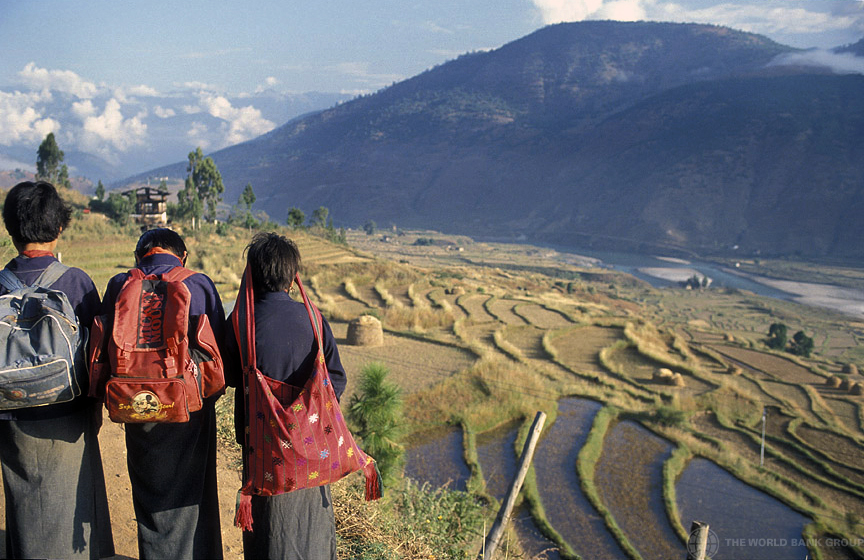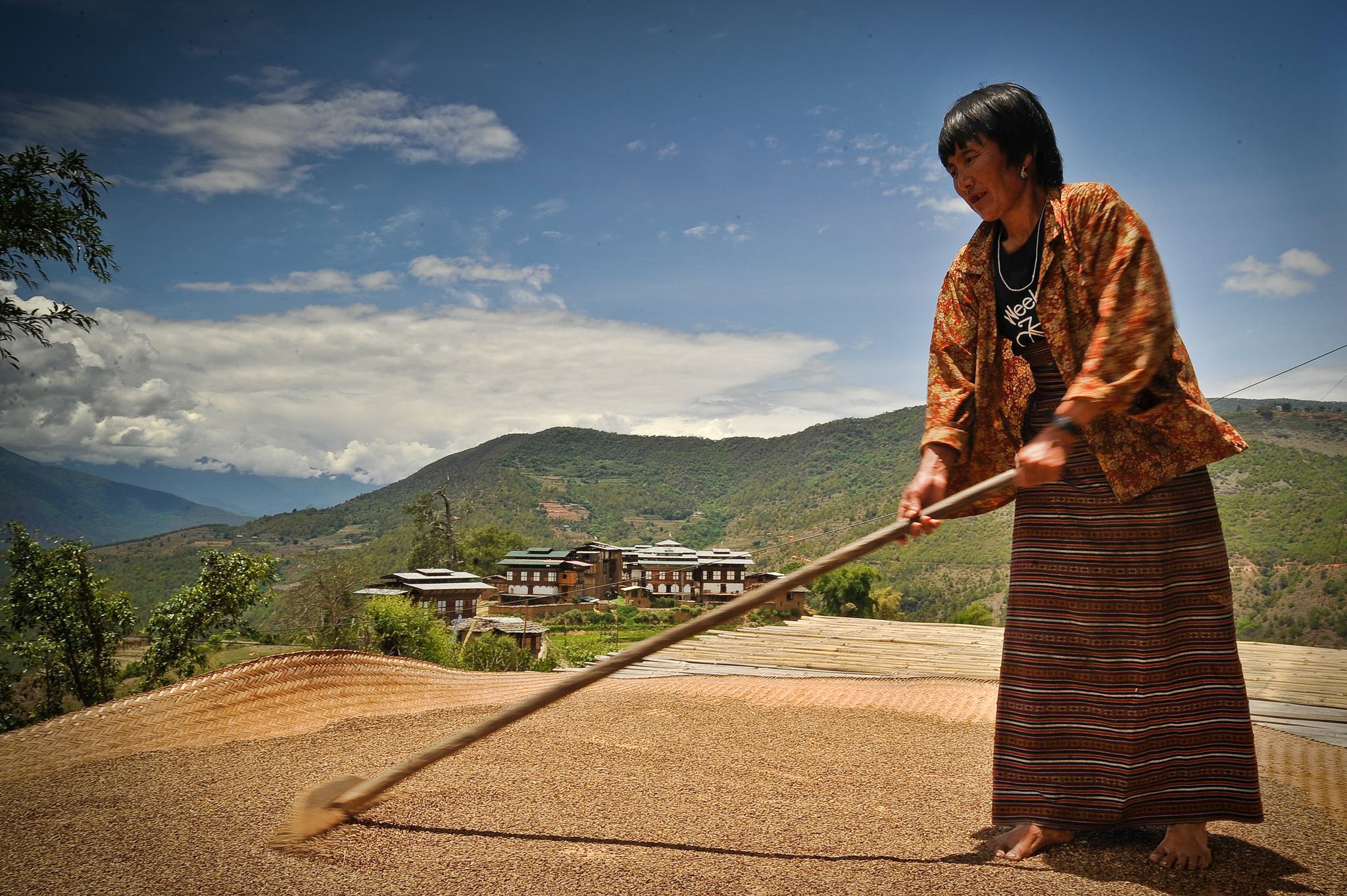In October this year Chencho and his wife looked over their paddy with pride. They are small farmers living in the village of Kabisa, located in Punakha district of Bhutan’s northwest, and the crop was looking good. But within a few days their joy was obliterated, along with most of their crops. An unexpected rainstorm, with heavy rains and hailstones wiped out 60% of their standing crop on the evening of October 13.
They were just one family among hundreds who suffered. Unseasonal rain and hailstorms swept across western Bhutan for ten days, starting on October 13, destroying crop that was just ready for harvesting. Of Bhutan’s 754,000 inhabitants, almost 90% are dependent on agriculture. Chencho and his wife grow paddy on two and half acres of wetland, which they sell at about BTN 80 (USD 1.20) per kilogramme at the local market for local rice. This allows them to pay for their basic needs for a year, and school uniforms for their children.
Interactive map: click on the orange dots for more information.
[iframe src=”https://bethwalker22.cartodb.com/viz/c756fb8e-944a-11e5-89db-0e674067d321/embed_map” width=”100%” height=”600px”]
No safety net for farmers
“We don’t know how to survive until the next harvest,” Chencho told thethirdpole.net. While agriculture officials came to conduct crop damage assessments in the days following the catastrophic rains, they have not informed the local farmers anything about compensation or assistance. The chief agriculture officer Chimi said famers have lost huge crops but compensating for crop loss is a complex issue and not a sustainable option. “The agriculture ministry of Bhutan is currently in discussion with the Royal Insurance Corporation of Bhutan limited about the possibility of crop insurance,” he said.
Agriculture officials said that the October rains and hailstorms affected farmers from eight districts and hundreds of acres of paddy crops. Wangdue district was the hardest hit. Around 367 acres of paddy fields and 234.5 metric tonnes of paddy crops were destroyed affecting almost 300 families. While suffering less from the rain, in terms of just damage from hail, Punakha was hit worse, affecting almost 60 families, with more than 80 acres of paddy fields being destroyed. Only about half of the farmers had manged to complete their harvest, while the rest still had their crops standing or had cut and stacked their crops in the field, and were completely unprepared for the destruction that followed.
The metrology department of Bhutan maintains and operates 92 stations across the country. The department provides people with weather forecast information through television and newspapers but according to the chief agriculture officer, “Bhutan’s hydro-met service does not have capacity to provide early warning information to farmers.” Therefore the farmers are ill-prepared for freak weather events.
Erratic rainfall has been a problem during the last couple of years, said Chimi Rinzin, chief agriculture officer with Bhutan’s Ministry of Agriculture. Last year the department received several drought reports from the southern Dagana and Tsirang districts during plantation season. Many paddy and maize fields were left fallow due to inadequate rainfall.
Chimi Rinzin attributes these impacts to climate change. “If we look back Bhutanese farmers never experienced such rainfall especially during harvest time and also no drought cases were reported during summer,” he told thethirdpole.net. In the last few years, though, the farmers were not just affected by erratic rainfall and but even suffered effects of the cyclone Phailin in 2013. Such cases, especially the effects of cyclone was never been recorded before in Bhutan, said Chimi Rinzin.
Black hole for data
In 2011 Bhutan’s National Environment Commission predicted that rainfall will become more extreme, with more frequent episodes of high rainfall over short periods and larger differences in rainfall between the season and that annual precipitation is likely to increase. A study on loss and damage associated with changing monsoon patterns by Koen Kusters and Norbu Wangchuk for a joint project with the Ugyen Wangchuck Institute for Conservation and Environment, Bumthang, Bhutan, and Wereld in Woorden – Global research and reporting, Amsterdam, the Netherlands stated that rainfall patterns in the Himalayan region remain poorly understood, largely because of an inadequate meteorological and hydrological database. It stated that because of fluctuations in precipitation were highly region-specific making it difficult to identify general patterns and trends, and at higher altitudes it becomes even more complicated to understand how various factors like wind direction, air pressure, temperature and moisture levels interact to deliver rains.
In the meanwhile the agriculture department is trying to put in place mitigation technologies that could prevent soil erosion such as improving crop varieties. For example encouraging farmers of eastern region to grow a rice variety called Khangmarp, which is tolerant to water stress, the chief agriculture told thethirdpole.net. “We are also trying to increase the efficiency of water usage. Lots of water is being lost to seepage and evaporation. We are promoting pipe irrigation system to reduce water loss.” Some of this may offset damage later, but if erratic weather patterns continue the problems of Bhutan’s farmers are only likely to increase.








